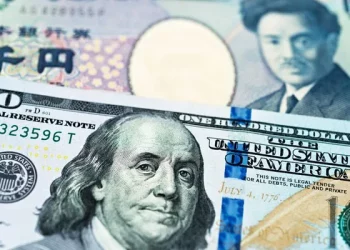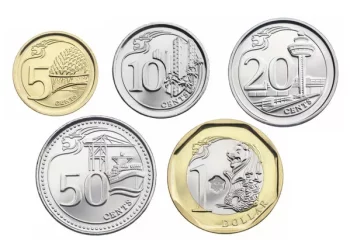China’s economic policies and strategies have significant global implications, given the country’s role as the world’s second-largest economy. One of the key aspects of these policies is the management of inflation, a critical factor for economic stability and growth. The People’s Bank of China (PBOC), the nation’s central bank, plays a crucial role in this context. This article explores the PBOC’s inflation target, its rationale, the methods used to achieve it, and its broader impact on both the Chinese and global economies.
The Role of the People’s Bank of China
The PBOC is responsible for implementing monetary policy in China. Established in 1948, the PBOC has evolved significantly over the decades, especially following economic reforms initiated in the late 20th century. Today, it operates with a degree of independence, although it remains under the oversight of the State Council, China’s chief administrative authority. The PBOC’s primary objectives include maintaining monetary stability, regulating the financial sector, and facilitating economic growth.
Inflation Targeting in China
Inflation targeting is a monetary policy strategy used by central banks worldwide to maintain price stability. Unlike some central banks, the PBOC does not adhere to a strict inflation-targeting regime. Instead, it employs a flexible approach, balancing multiple objectives such as economic growth, employment, and financial stability alongside controlling inflation.
Current Inflation Target
The PBOC’s inflation target is typically articulated through the government’s annual economic work reports. As of the most recent updates, China aims to keep consumer price index (CPI) growth at around 3%. This target reflects a balance between fostering economic growth and preventing the economy from overheating, which can lead to high inflation and associated economic problems.
Historical Perspective
Historically, China’s inflation targets have varied in response to changing economic conditions. During periods of rapid economic growth, the PBOC has sometimes prioritized controlling inflation to prevent the economy from overheating. Conversely, during economic slowdowns, the focus has often shifted towards stimulating growth, even at the risk of higher inflation.
Rationale Behind the Inflation Target
The PBOC’s inflation target is influenced by several factors, including economic growth objectives, employment goals, and the need to ensure financial stability. Here are some key considerations:
Economic Growth
China’s rapid economic growth over the past few decades has been accompanied by significant inflationary pressures. A moderate inflation target helps to sustain this growth by ensuring that price increases do not erode purchasing power or disrupt economic stability. By maintaining inflation at around 3%, the PBOC aims to create a conducive environment for continued economic expansion.
Employment
High inflation can erode real wages and reduce consumer purchasing power, leading to decreased demand for goods and services. This, in turn, can result in job losses and higher unemployment. By targeting moderate inflation, the PBOC seeks to support stable employment levels and protect workers’ real incomes.
Financial Stability
Excessive inflation can lead to asset bubbles and financial instability. For instance, rapid increases in housing prices can make property unaffordable for many people, while speculative investment can lead to market volatility. By keeping inflation in check, the PBOC aims to prevent such financial imbalances and ensure the stability of the broader financial system.
Methods for Achieving the Inflation Target
The PBOC employs a variety of tools and strategies to achieve its inflation target. These include traditional monetary policy instruments, as well as more innovative measures tailored to the unique characteristics of the Chinese economy.
Interest Rate Adjustments
One of the primary tools at the PBOC’s disposal is the adjustment of interest rates. By raising or lowering the benchmark lending rate, the central bank can influence borrowing costs, consumer spending, and investment levels. For instance, higher interest rates can help to curb inflation by making borrowing more expensive, thereby reducing spending and investment. Conversely, lower rates can stimulate economic activity by making credit more accessible.
Reserve Requirements
The PBOC can also adjust the reserve requirement ratio (RRR) for banks, which dictates the amount of money that banks must hold in reserve rather than lending out. Increasing the RRR can help to control inflation by reducing the amount of money in circulation, while decreasing the RRR can stimulate economic activity by increasing the funds available for lending.
Open Market Operations
Open market operations (OMOs) involve the buying and selling of government securities to regulate the money supply. By selling securities, the PBOC can reduce the amount of money in circulation, thereby exerting downward pressure on inflation. Conversely, purchasing securities can increase the money supply and stimulate economic activity.
Exchange Rate Management
China’s exchange rate policy also plays a role in controlling inflation. A stronger currency can help to reduce import prices, thereby lowering inflationary pressures. Conversely, a weaker currency can make exports more competitive but may also lead to higher import prices and inflation.
Targeted Measures
In addition to these traditional tools, the PBOC has implemented targeted measures to address specific inflationary pressures. For example, during periods of rising food prices, the central bank has taken steps to stabilize food supplies and prices through subsidies, stockpiling, and other interventions.
Challenges and Criticisms
While the PBOC’s approach to inflation targeting has been generally effective, it is not without challenges and criticisms. Some of the key issues include:
Balancing Multiple Objectives
One of the main challenges faced by the PBOC is balancing its multiple objectives. Unlike central banks that focus solely on inflation targeting, the PBOC must also consider economic growth, employment, and financial stability. This can lead to trade-offs and conflicts between different policy goals.
See Also: What is the 5-Year PBOC Rate?
Transparency and Communication
The PBOC’s communication of its inflation targets and policy decisions has sometimes been criticized for lacking transparency. Clear and consistent communication is essential for managing market expectations and ensuring the effectiveness of monetary policy. The PBOC has made efforts to improve its communication in recent years, but further progress is needed.
External Pressures
China’s economy is heavily influenced by global economic conditions and external pressures. Factors such as trade tensions, fluctuations in global commodity prices, and changes in foreign exchange rates can all impact inflation and complicate the PBOC’s policy decisions.
Structural Issues
Structural issues within the Chinese economy, such as regional disparities, the dominance of state-owned enterprises, and the need for ongoing reforms, can also affect inflation dynamics. Addressing these issues requires a comprehensive approach that goes beyond traditional monetary policy tools.
Impact on the Global Economy
China’s inflation target and monetary policy have significant implications for the global economy. As a major trading partner and a key player in global supply chains, China’s economic conditions can influence global inflation trends, commodity prices, and financial markets.
Global Trade and Supply Chains
China’s role as the “world’s factory” means that changes in its inflation rate can impact the cost of goods and materials worldwide. Higher inflation in China can lead to increased export prices, affecting global supply chains and contributing to inflationary pressures in other countries.
Commodity Prices
China is a major consumer of commodities, including oil, metals, and agricultural products. Changes in Chinese demand can influence global commodity prices, which in turn affect inflation rates in other countries. For example, a slowdown in Chinese economic growth and lower demand for commodities can lead to lower global prices, reducing inflationary pressures elsewhere.
Financial Markets
The PBOC’s monetary policy decisions can also impact global financial markets. Changes in interest rates and liquidity conditions in China can influence capital flows, exchange rates, and investor sentiment. For instance, an increase in Chinese interest rates may attract foreign investment, leading to currency appreciation and potential spillover effects on other economies.
Conclusion
The PBOC’s inflation target is a key component of China’s monetary policy framework, aimed at maintaining price stability, supporting economic growth, and ensuring financial stability. By targeting a moderate inflation rate of around 3%, the PBOC seeks to balance these objectives in a rapidly evolving economic environment. While the central bank faces challenges in achieving its goals, including balancing multiple objectives and managing external pressures, its efforts have significant implications for both the Chinese and global economies. Understanding the PBOC’s inflation target and its broader impact is essential for comprehending the complexities of China’s economic policies and their global ramifications.
Related Topics:



























